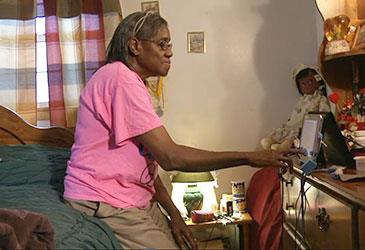What if you could read the exact blood sugar levels of your patients with diabetes right now, send this information to your care staff and alert your patients about their high glucose levels even if they’re 100 miles away—all with the help of a touch screen? Sound like futuristic fanfiction?
Think again. This is telemedicine and a key component of patient care at the University of Mississippi Medical Center (UMMC) in Jackson, Miss., one of four team-based practices featured in a new PBS documentary, Rx: The Quiet Revolution.
Created by 10-time Emmy Award winner David Grubin, the AMA-sponsored film showcases physicians and care teams across the nation who are changing how people receive medical care by lowering costs and making patients the central focus of their practices.
For Kristi Henderson, chief telehealth and innovation officer at UMMC, this entailed creating strategic technology to help physicians overcome barriers and better partner with patients to improve health outcomes.
In August of 2014, UMMC launched the Diabetes Health Network, which employs wireless electronic tablets loaded with a care management application called “Care Innovations.” This application allows patients with diabetes to capture their blood pressure and glucose levels, and instantly transmit this information to their physicians. When patients’ blood sugar is too high, their physicians know immediately to intervene on their behalf or call them to discuss how to lower their glucose levels in real-time.
“Diabetes is kind of a quiet disease, and there [are] many times you aren’t even aware that you have it,” said Cindy Broome, an RN coordinator at UMMC who uses Care Innovations to checks her patients’ blood sugar levels each morning. “The purpose of this is daily interventions, so we can catch things before they become problems.”
As prediabetes, the precursor to type 2 diabetes, silently grips the lives of as many as one in three U.S. adults, the UMMC’s tablets offer a timely solution for patients who have diabetes and may need consistent communication with a physician to make healthier choices each day.
This is particularly true for patients in largely rural states such as Mississippi, where obesity is rampant yet the average resident lives more than 40 minutes away from specialists who treat patients with diabetes, Dr. Henderson said.
Physicians at the North Sunflower Medical Center in Ruleville are participating in a state-wide study using the UMMC’s technology and already have seen positive results among tablet-toting patients, including decreased glucose levels and fewer emergency room visits.
How can your practice improve diabetes outcomes?
Learn more about UMMC’s tablet technology and diabetes outcomes by viewing Rx: The Quiet Revolution: Watch the full film online or check to see when it airs where you live.
Even if you don’t have tablet technology to monitor your patients, you still can help patients at risk for diabetes make important changes to improve their health outcomes.
Check out a new toolkit recently released by the AMA and the Centers for Disease Control and Prevention as part of the Prevent Diabetes STAT: Screen, Test, Act – Today™ initiative. The toolkit helps physicians and their care teams integrate into their practice work flows screening and testing patients for prediabetes as well as referring them to evidence-based diabetes prevention programs.




